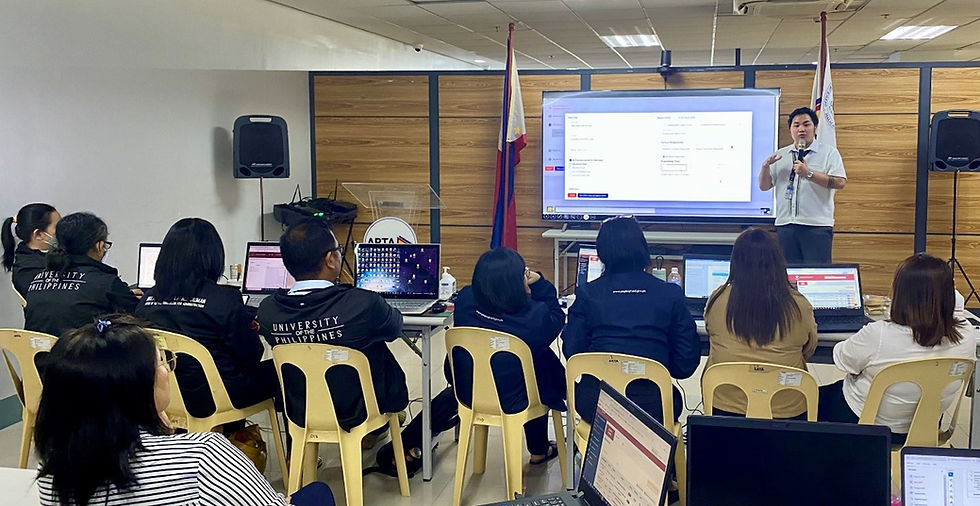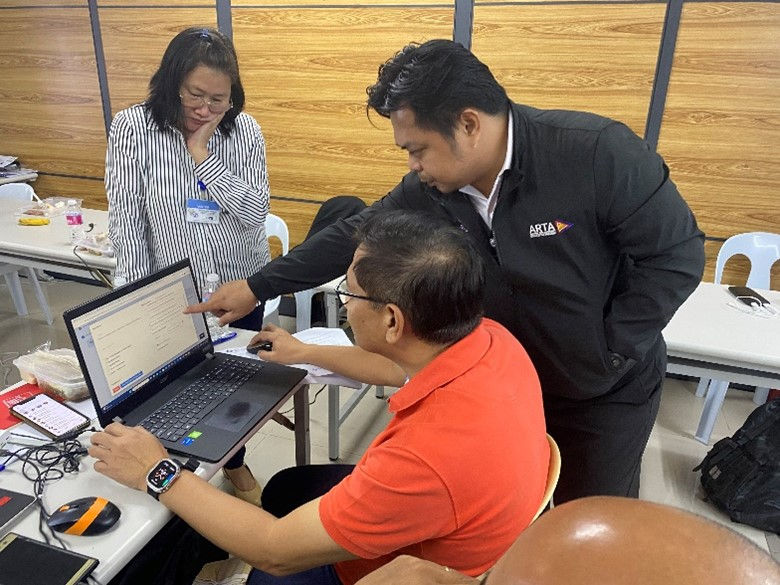𝐀𝐑𝐓𝐀'𝐬 𝐀𝐑𝐓𝐄𝐌𝐈𝐒 𝐈𝐧𝐢𝐭𝐢𝐚𝐭𝐢𝐯𝐞 𝐄𝐧𝐡𝐚𝐧𝐜𝐞𝐬 𝐓𝐫𝐚𝐧𝐬𝐩𝐚𝐫𝐞𝐧𝐜𝐲 𝐨𝐟 𝐑𝐞𝐠𝐮𝐥𝐚𝐭𝐨𝐫𝐲 𝐏𝐫𝐨𝐜𝐞𝐬𝐬𝐞𝐬 𝐚𝐧𝐝 𝐑𝐞𝐪𝐮𝐢𝐫𝐞𝐦𝐞𝐧𝐭𝐬 𝐀𝐟𝐟𝐞𝐜𝐭𝐢𝐧𝐠 𝐁𝐮𝐬𝐢𝐧𝐞𝐬
- Gillian Hidalgo
- Dec 1, 2023
- 2 min read

The Anti-Red Tape Authority (ARTA) with technical assistance from the USAID Regulatory Support Program for National Development (RESPOND) through the U.P. Public Administration Research and Extension Services Foundation, Inc. (UPPAF) conducted a three-day on-boarding and initial encoding session for the Anti-Red Tape Electronic Management Information System (ARTEMIS) from November 21 to 23 at the ARTA Conference Room in Quezon City.
Over 40 participants from 12 government agencies and offices, including the Bustos Water District, Calamba Water District, Bureau of Internal Revenue, Land Transportation Office, Home Development Mutual Fund, Philippine Health Insurance Corporation, University of the Philippines – Diliman, Polytechnic University of the Philippines – Main, Lung Center of the Philippines, East Avenue Medical Center, Local Government of Manila City and the Local Government of Quezon City, convened for this event. They engaged in real-time encoding of their Citizen's Charters into the ARTEMIS to digitize information identifying the steps, expected time durations, government offices, costs, and requirements involved in government clearances, permits, and licenses.

The participating agencies were specifically chosen to populate ARTEMIS which will be showcased during its official launch at the forthcoming Ease of Doing Business (EODB) Convention at the Philippine International Convention Center from November 29 to December 1 this year.
ARTEMIS, an innovative online platform devised by ARTA, is poised to revolutionize the way Citizen's Charters are submitted and accessed. It will establish a unified, real-time database encompassing all government services. Notably, this system will standardize Citizen's Charters, leverage business process management features for service reengineering, and empower citizens to readily access and download Citizen’s Charters from all government agencies.
𝙎𝙤 𝙒𝙝𝙖𝙩? ARTEMIS aims to streamline and digitalize the submission, assessment, monitoring, and updating of Citizen's Charters across all government entities, ultimately establishing a comprehensive real-time database and mapping system for all government services thus enhancing service accessibility and efficiency in promoting a more citizen-centric approach to governance.









Comments